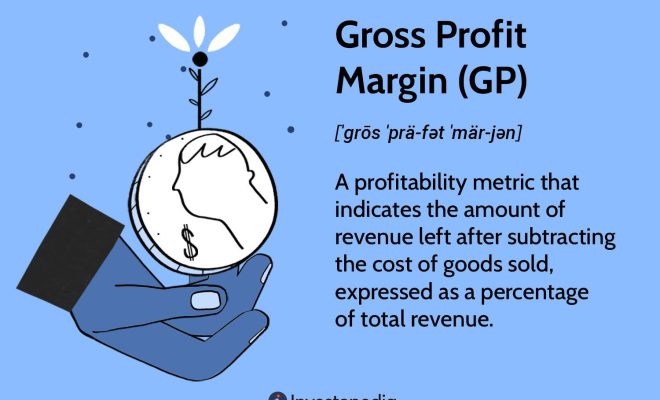How to calculate gross profit percentage

Understanding and calculating gross profit margin is crucial for any business owner or investor. Gross profit margin is an important financial metric that demonstrates the profitability of a company by comparing its gross profit to its total revenue. This article will outline the steps to calculate gross profit margin and provide insights on its significance in assessing a company’s financial health.
Step 1: Determine Gross Profit
The first step in calculating gross profit margin is to determine the gross profit. Gross profit represents the revenue remaining after subtracting the cost of goods sold (COGS) from the total revenue. COGS includes the direct costs associated with producing goods or providing services, such as raw materials, labor, and manufacturing overhead.
Gross Profit = Total Revenue – Cost of Goods Sold (COGS)
Step 2: Calculate Total Revenue
Total revenue is the income generated by a business from sales of products or services before any expenses are deducted. To calculate total revenue, multiply the number of units sold by the price per unit.
Total Revenue = Number of Units Sold × Price per Unit
Step 3: Calculate Gross Profit Margin
Now that you have calculated both gross profit and total revenue, you can determine your gross profit margin. Divide the gross profit by the total revenue, then multiply by 100 to convert the result into a percentage.
Gross Profit Margin (%) = (Gross Profit ÷ Total Revenue) × 100
Example:
Let’s say your company sold 10,000 units of a product at a price of $20 per unit. The cost of goods sold for these units was $120,000.
1. Calculate Total Revenue:
Total Revenue = Number of Units Sold × Price per Unit = 10,000 × $20 = $200,000
2. Calculate Gross Profit:
Gross Profit = Total Revenue – COGS = $200,000 – $120,000 = $80,000
3. Calculate Gross Profit Margin:
Gross Profit Margin (%) = (Gross Profit ÷ Total Revenue) × 100 = ($80,000 ÷ $200,000) × 100 = 40%
So, in this case, your gross profit margin is 40%.
Conclusion:
Calculating gross profit margin gives business owners and investors a clear picture of a company’s ability to turn revenue into profit. A higher gross profit margin indicates that the business is able to efficiently produce goods or services at a lower cost. Keeping track of your gross profit margin can help you identify areas for improvement and make strategic decisions to boost your company’s profitability. By understanding this metric, you can ensure the long-term success of your business.






